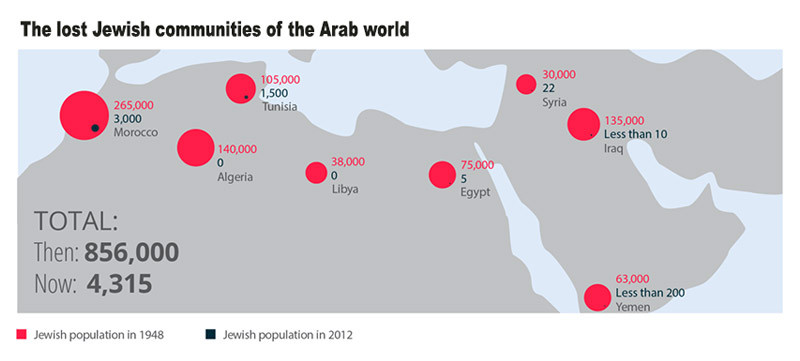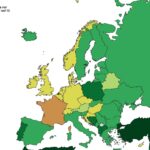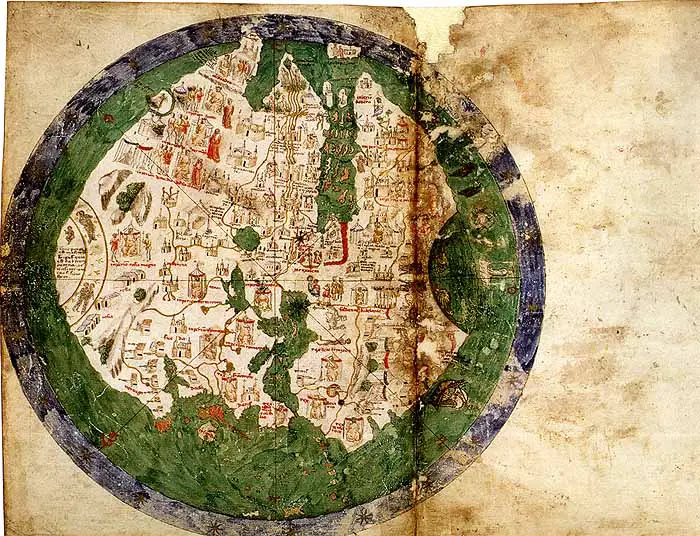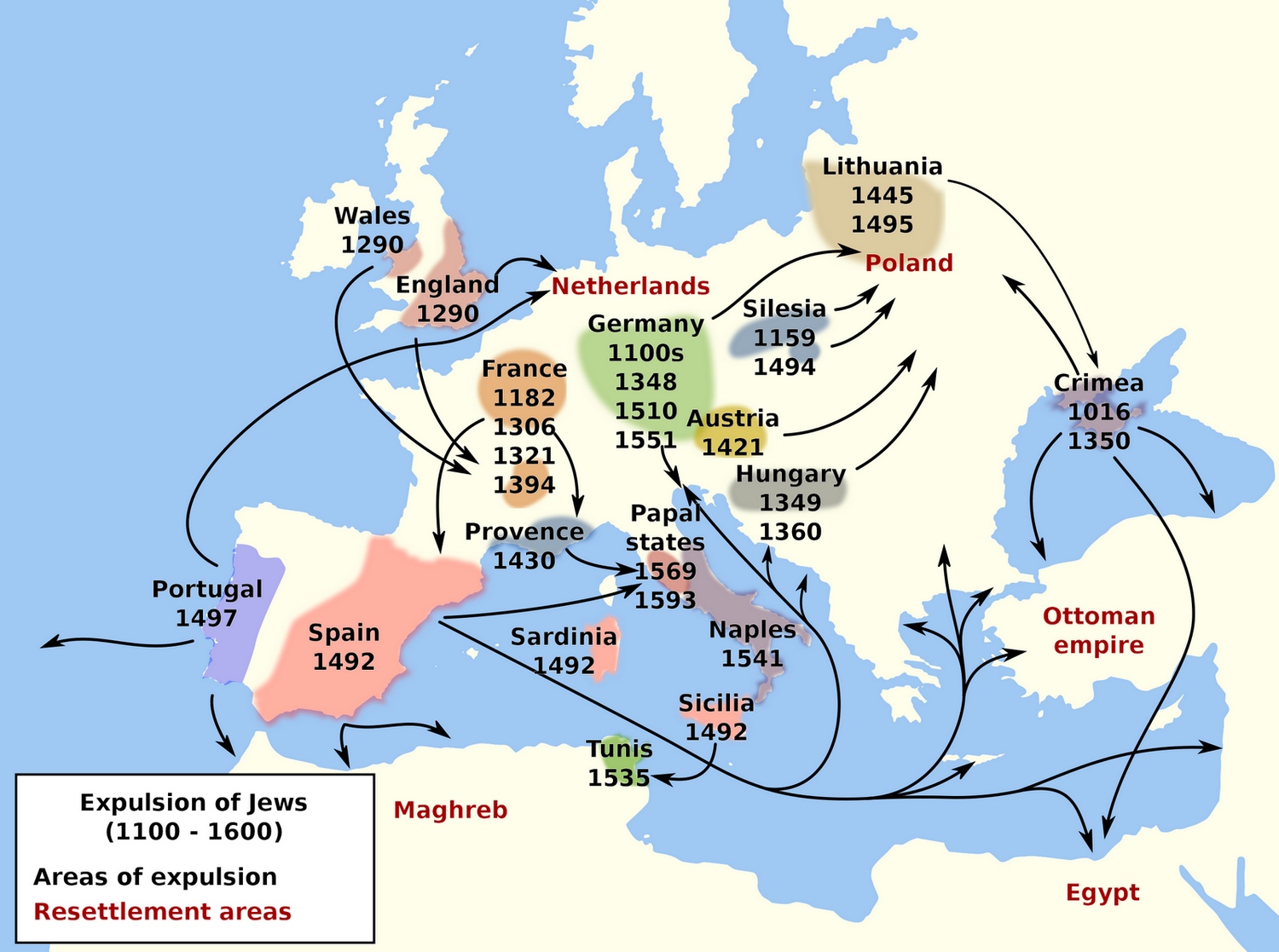The Lost Jewish Communities of the Arab World
For centuries, Jewish communities were part of the everyday landscape in the Arab world. They weren’t outsiders; they were neighbors, merchants, teachers, and craftsmen. In Baghdad, Cairo, Tunis, and Casablanca, Jewish traditions sat alongside Islamic and Christian ones, shaping the character of entire cities.
And then, within a few decades, nearly all of it unraveled.
The map below, created by Israel’s Ministry of Foreign Affairs makes the change painfully clear. In 1948, large red circles show the size of Jewish populations. By 2012, those circles have shrunk to dots so small they’re barely visible.

Here are the figures from that map, side by side:
| Country | Jewish Population in 1948 | Jewish Population in 2012 |
|---|---|---|
| Morocco | 265,000 | 3,000 |
| Algeria | 140,000 | 0 |
| Tunisia | 105,000 | 1,500 |
| Libya | 38,000 | 0 |
| Egypt | 75,000 | 5 |
| Yemen | 63,000 | < 200 |
| Iraq | 135,000 | < 10 |
| Syria | 30,000 | 22 |
| Total | 856,000 | 4,315 |
The collapse began around 1948, the year Israel was founded. Across much of the Arab world, life suddenly became dangerous for Jews. New laws cut into rights and livelihoods. Violence erupted in some places: pogroms in Libya destroyed entire neighborhoods; in Iraq, the Farhud riots of 1941 had already been a dark omen.
What followed was a mass departure, often carried out in waves. In Yemen, nearly every Jewish resident – around 63,000 people – was flown to Israel during Operation Magic Carpet in 1949–50. In Iraq, more than 120,000 left in Operation Ezra and Nehemiah between 1950 and 1951. Families walked away from homes, shops, and property they had owned for generations, often under duress or outright expulsion.
Over time the restrictions grew heavier, and life became harder to sustain. Communities that had been part of these countries for hundreds of years thinned out quickly, until hardly anyone was left. What remains today is scattered: a synagogue that still stands but no longer gathers a crowd, the outlines of once-Jewish streets, and traditions carried abroad in food, music, and family stories. Places that were once full of daily life now survive mostly in memory.








